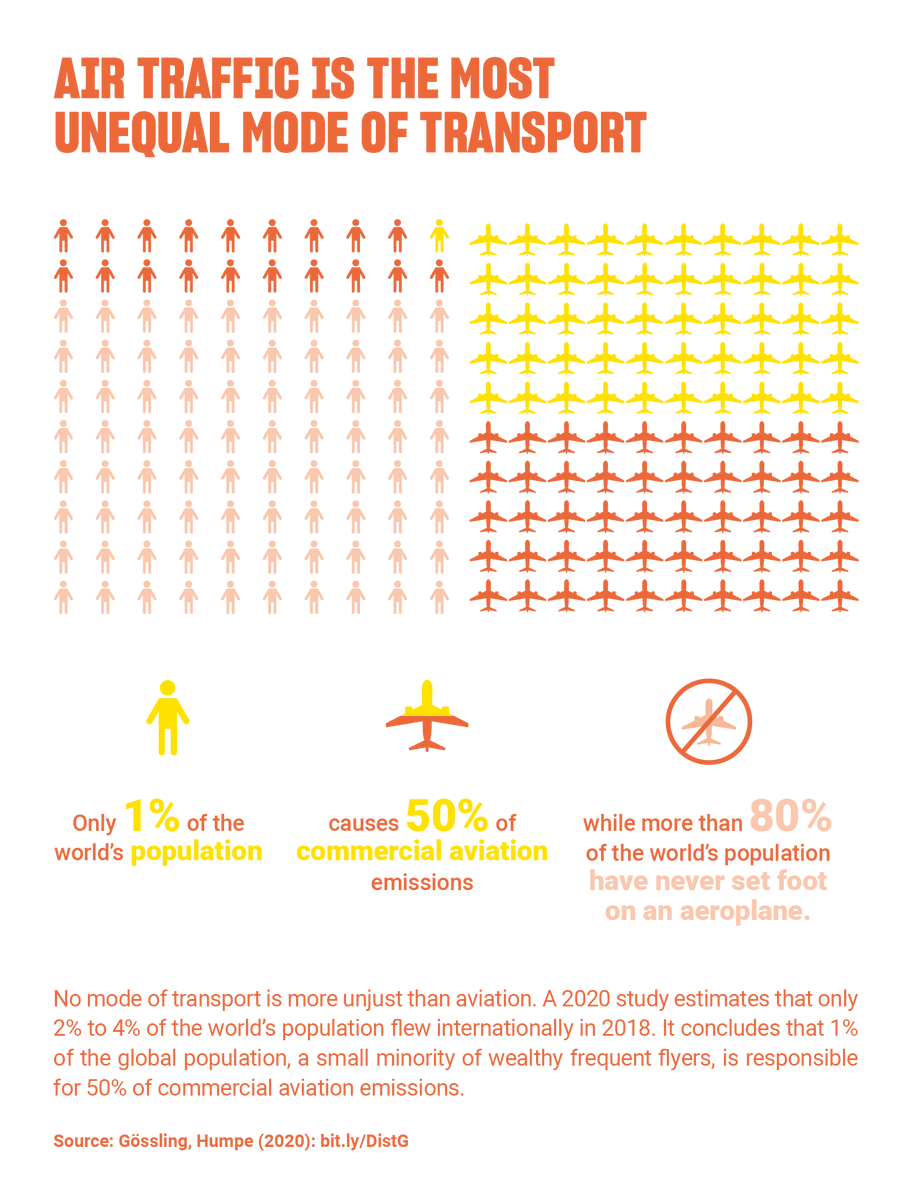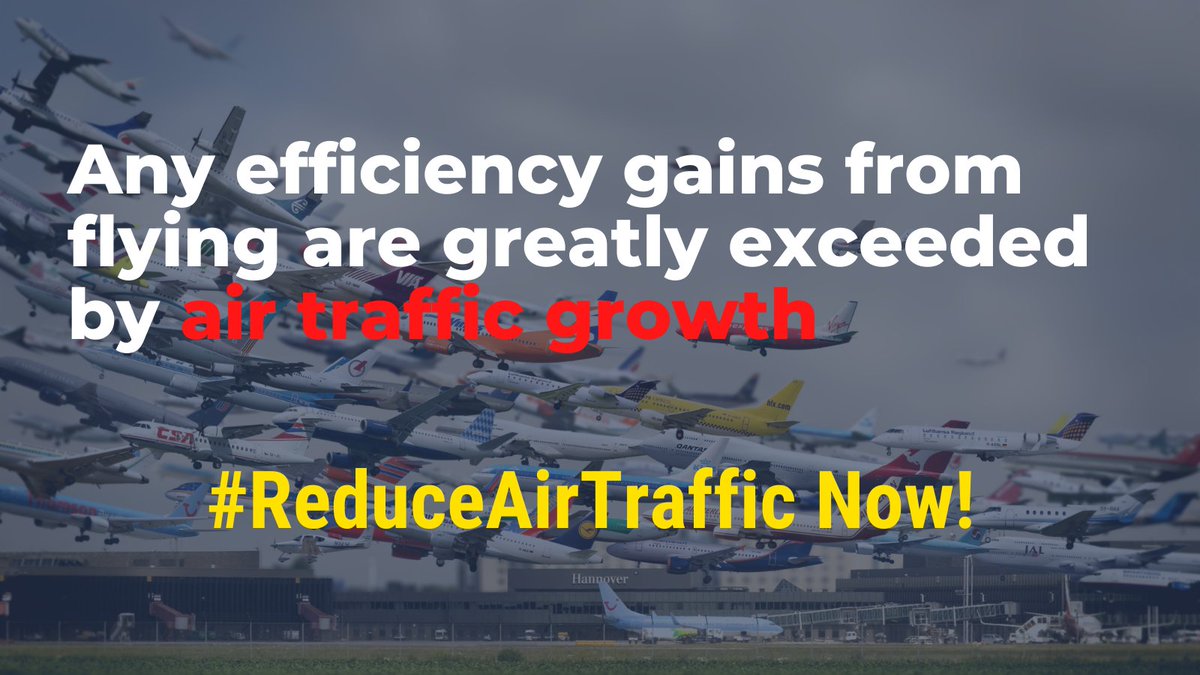
The climate crisis and aviation‘s role 🌏🔥✈️
11 facts that will change your view on air traffic and its climate impact
#CommonDestination #ReframeAviation
#Thread 🧵1/14
11 facts that will change your view on air traffic and its climate impact
#CommonDestination #ReframeAviation
#Thread 🧵1/14

Before Covid, flying caused around 1 billion tonnes of CO2* per year.
That means if aviation were a country, it would be one of the largest single emitters, just behind Japan and ahead of countries like Germany and South Korea.
*Flights have additional climate impacts.
2/14
That means if aviation were a country, it would be one of the largest single emitters, just behind Japan and ahead of countries like Germany and South Korea.
*Flights have additional climate impacts.
2/14

Flying regularly is not compatible with a 1.5 degree lifestyle.
Just one long-haul flight can emit more CO2 per passenger than what's feasible for staying below 1.5 degrees of global heating.
3/14
Just one long-haul flight can emit more CO2 per passenger than what's feasible for staying below 1.5 degrees of global heating.
3/14

If pre-Covid aviation growth rates resume, air traffic alone would contribute a massive 0.1˚C to global heating by 2050, as a study by @milankloewer and colleagues from 2021 has shown.
4/14
4/14

The inequality of aviation is staggering!
The richest 1% of the world's population is responsible for 50% of aviation emissions. In contrast, around 80% of the world's population has never flown.
5/14
The richest 1% of the world's population is responsible for 50% of aviation emissions. In contrast, around 80% of the world's population has never flown.
5/14

Private jets are the peak of obscene pollution!
A flight on a private jet is 5-14(!) times more damaging to the climate than a scheduled flight per passenger. And private jets are extremely unevenly distributed globally.
6/14
A flight on a private jet is 5-14(!) times more damaging to the climate than a scheduled flight per passenger. And private jets are extremely unevenly distributed globally.
6/14

Aviation has contributed more to global heating than entire continents!
Including all its climate impacts, the share of aviation is 4%, whereas Africa, South America and India have each contributed only 3% to the climate crisis.
7/14
Including all its climate impacts, the share of aviation is 4%, whereas Africa, South America and India have each contributed only 3% to the climate crisis.
7/14

Flying is the most climate-damaging means of transport per hour!
Due to speed and long distances, as well as the enormous amounts of energy needed to fly, a flight emits many times more CO2 (and other emissions) than alternative modes of transport.
8/14
Due to speed and long distances, as well as the enormous amounts of energy needed to fly, a flight emits many times more CO2 (and other emissions) than alternative modes of transport.
8/14

What if everyone on earth flew once a year?
Our thought experiment shows: that alone would eat up our remaining carbon budget. Frequent flying and a fair distribution of emissions are not compatible.
9/14
Our thought experiment shows: that alone would eat up our remaining carbon budget. Frequent flying and a fair distribution of emissions are not compatible.
9/14

Our climate cannot afford billionaires!
With their jet-set lives, the richest annually squander many times the lifetime emissions of average people. In addition, extreme wealth creates a problematic and undemocratic concentration of power.
10/14
With their jet-set lives, the richest annually squander many times the lifetime emissions of average people. In addition, extreme wealth creates a problematic and undemocratic concentration of power.
10/14

What would happen if everyone flew like the richest Europeans?
If everyone in the world flew like the richest 10% of Europe, aviation alone would cause annual climate pollution equal to 2/3 of the total global emissions in 2019!
11/14
If everyone in the world flew like the richest 10% of Europe, aviation alone would cause annual climate pollution equal to 2/3 of the total global emissions in 2019!
11/14

Can we believe the aviation industry's climate promises?
Evidence shows: No.
Aviation lobbies like @IATA and airlines regularly set new climate targets - and just as reliably miss them.
A new report by @possible proves this once again: wearepossible.org/latest-news/fo…
12/14
Evidence shows: No.
Aviation lobbies like @IATA and airlines regularly set new climate targets - and just as reliably miss them.
A new report by @possible proves this once again: wearepossible.org/latest-news/fo…
12/14

All graphics 🔼🔼🔼 are from our new guide #CommonDestination. There you will find even more facts and narratives to #ReframeAviation.
You can find it here as an online version and PDF (also in German): reframeaviation.stay-grounded.org
13/14

You can find it here as an online version and PDF (also in German): reframeaviation.stay-grounded.org
13/14


Want to learn how to use these facts best and embed them in transformative narratives? #ReframeAviation
Then sign up now for our free storytelling trainings on aviation and climate justice. In English, German, Spanish and French: stay-grounded.org/training/
14/14
Then sign up now for our free storytelling trainings on aviation and climate justice. In English, German, Spanish and French: stay-grounded.org/training/
14/14

• • •
Missing some Tweet in this thread? You can try to
force a refresh














